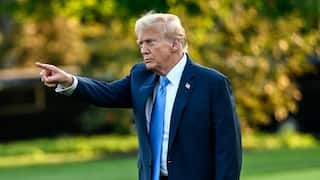Opinion | India-China Ties: Will Pragmatism Prevail Under Modi 3.0 Amid Coalition Challenges And Economic Shifts?

Indian Prime Minister Narendra Modi has returned for a third straight term after his election victory in June. But this time around, his Bharatiya Janata Party (BJP) failed to secure a full majority and had to settle with forming a coalition government with a few other small parties. This unexpected result has made many wonder whether Modi will need to adjust his policies going forward. While it is too early to determine how much pressure Modi will feel from his coalition partners, things are going pretty well so far for the BJP. All key ministries are still under the party’s firm control, and the recently announced budget maintained the strategy of prioritising fiscal consolidation, with the country’s fiscal deficit expected to hit a five year low in 2024-2025.
Foreign policy should, in principle, be the least affected by India’s new coalition government, not only because the small parties in the coalition do not have a foreign policy agenda, but also because Modi has reappointed the same Minister of External Affairs, Subrahmanyam Jaishankar. In fact, Modi’s official visits since the start of his third tenure show how important India’s nonalignment stance will continue to be, with an official visit to Moscow right after visiting Italy for the G7 Outreach Summit.
India’s nonalignment has an important twist: India considers itself a key intermediary for the Global South, and is unhappy about China’s growing influence among those countries. More generally, India has had a long antagonistic relationship with China based on historical grievances, a situation that has only worsened during Modi’s tenure. It was during Modi’s first two terms that India experienced its worst border incidents with China in decades—the Doklam standoff in 2017 and the deadly clash in the Galwan Valley in 2020. These two events, coupled with China’s increasing influence in South Asia and the wider Indian Ocean—regions that India traditionally views as part of its sphere of influence—through the Belt and Road Initiative has raised suspicions in New Delhi about Beijing’s intentions, feeding Modi’s wariness and certainly that of his foreign minister. History also explains his government’s worries as the Indo-China war of 1962 was precipitated by a series of similar border clashes which ended in India’s humiliating defeat due to a stronger People’s Liberation Army. Today, the difference in military spending between the two Asian giants is even larger than it was in 1962 which explains New Delhi’s anxieties. The addition of Indian provinces in the official map of China in 2023 and the build-up of strategic infrastructure in disputed areas indicate that the risk of conflict remains intact.
All of the above remains highly relevant during Modi’s third term, as China’s influence in the Global South seems to be as strong as ever, including in India’s neighbouring countries, especially Pakistan, but also Bangladesh, Myanmar, Sri Lanka as well as the Maldives. In Pakistan, the ongoing development of connectivity infrastructure under the China-Pakistan Economic Partnership has been a continued source of irritation for India. In the same vein, Myanmar, since becoming an international pariah following its military coup in February 2021, has aligned itself much closer to China and is becoming another big problem for Modi.
Finally, and probably most importantly, Russia’s invasion of Ukraine has brought China and Russia much closer. Given India’s long-term relations with Russia, its dependence on Russian military equipment, and its desire to stop Moscow siding with Beijing against India, Modi has been placed in an awkward position. On the one hand, India is increasingly tied to the US on security in a series of bilateral and regional agreements (principally the Indo-Pacific and Quadrilateral Security Dialogue). On the other hand, India’s historical relations with Moscow, dependence on Russia, and the China factor, have led India under Modi to remain neutralist on the Ukraine war and to criticise Western sanctions against the Kremlin.
A final important point is Taiwan, which has become an increasingly important economic and geopolitical partner for India. Taiwan is a major overseas investor in India’s high-tech manufacturing sector, particularly semiconductors. In addition, a partnership with key regional players such as Taiwan, could strengthen India’s position against an emerging China-Russia dyad, which could potentially create trouble for India, even at its northern borders. Support for Taiwan could help India get the US closer within its Indo-Pacific Strategy. Following his election victory, Modi’s decision to publicly thank Taiwan President Lai Ching-te for his congratulations on social media—an act that elicited a protest from Beijing—demonstrated the increasing importance of Taiwan to Modi’s agenda. The reality is that a number of Taiwanese companies have set up business in India, including Foxconn, notwithstanding its massive exposure to China.
All the above seems to indicate that Modi will continue with his tough position on China in this third mandate but with an important twist in the economic sphere.
OPINION | As Nepal Seeks Equilibrium, India Should Rise Above ‘Roti Beti Ka Rishta’
Modi's Third Term And The China Challenge
Modi’s first and second terms have been characterised by protectionism against Chinese imports, as well as foreign direct investment with high profile bans on Chinese mobile apps such as TikTok and others, mainly justified by national security worries. At the same time, though, India’s bilateral trade deficit with China has ballooned since Modi came to power, reaching USD 85 billion, notwithstanding the heavy import tariffs that India has placed on a large number of Chinese goods.
Modi’s third mandate seems to be heading towards a different direction as India’s annual economic report, which was released together with the budget, recommended courting investment from China. One can think of three reasons for this sudden change of direction. First, Modi’s underwhelming electoral results may be related to his administration’s less than stellar success so far at boosting employment in the country. Opening the Indian manufacturing sector to foreign direct investment from China would be a way to not only create more domestic job opportunities, but also produce a wider range of goods that could be exported to reduce the trade deficit. Second, India has witnessed how much Vietnam and Mexico have profited economically from the de-risking strategies of Western companies. As such, India is keen to position itself as a viable investment destination—one that can attract not just Western companies, but also Chinese companies seeking new manufacturing locations to circumvent US restrictions. Finally, Chinese investment in India’s green tech sector would be a major boost for the country’s decarbonisation efforts. Not only would it bring in state-of-the art technology, but would also enhance India’s access to the critical raw materials needed to manufacture renewables and electric vehicles.
Attracting Chinese FDI will not necessarily be easy for India, as many Chinese companies have tried (from Shein to BYD) without success. But the question is how much of that opening-up will be for real. India’s public opinion will not make it easy for Modi to essentially U-turn from his administration’s previous stance and could cost him more of his domestic popularity.
This is why Modi may want to become more aggressive, rather than less, on China as far as national security and foreign policy is concerned so as to create room to selectively allow Chinese FDI into India. The sectors which India needs the most are those related to decarbonisation since India needs the most efficient, and cheapest, technology to reach its targets, while still creating jobs in the country, and integrating India into the global supply chains of green manufacturing.
The risk with this strategy is that a more assertive foreign policy alone might not be sufficient to sate the nationalistic anger of India’s domestic public. Modi might face growing calls to up the ante by further restricting economic engagement with China. Moreover, it is unlikely that China would remain passive, and would probably respond in kind to India’s apparent hawkishness, raising the probability of yet another, more severe, border incident.
All in all, even if Modi, and his economic team, seem to be taking a more constructive stance on China as far as manufacturing FDI is concerned, this more pragmatic turn may not apply to New Delhi’s foreign policy stance. China’s structural deceleration and India’s economic catch-up is bound to continue, adding to the rivalry.
Alicia García Herrero, PhD, is a Senior Research Fellow at Bruegel, and is the Chief Economist for Asia Pacific at NATIXIS. She is also a Non-Resident Fellow at the East Asia Institute, National University of Singapore.
[Disclaimer: The opinions, beliefs, and views expressed by the various authors and forum participants on this website are personal and do not reflect the opinions, beliefs, and views of ABP News Network Pvt Ltd.]
This article first appeared on the official website of Lee Kuan Yew School of Public Policy, and has been republished with permission.


























